In the vast expanse of the seas, long lead times for parts, operational delays, and inefficient supply chains were expected and expensive, but now 3D printing is bringing a wave of transformation to the maritime industry.
Thankfully, 3D printing technology is increasingly seaworthy, and solutions for 3D printed spare parts, 3D printed manufacturing models, and fully 3D printed boats are now on the horizon.
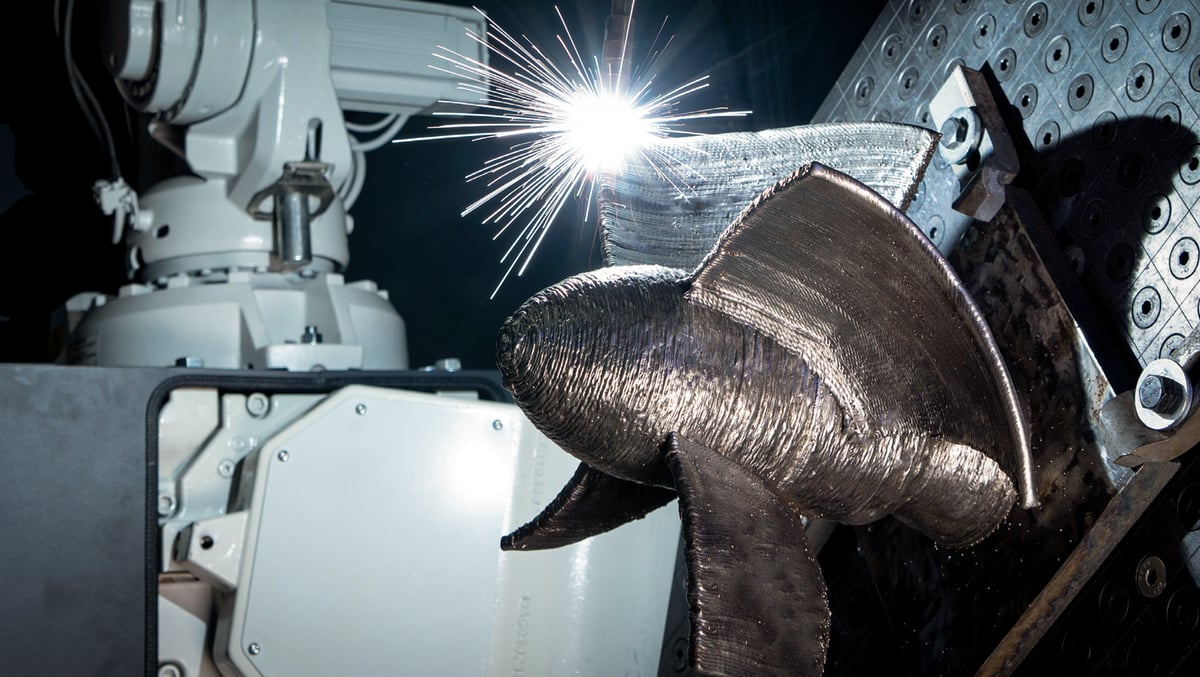
What’s got the maritime industry talking lately is the online platform launched recently by industry stalwarts Thyssenkrupp and Wilhelmsen to connect maritime part makers with vessel managers for spare part 3D printing. Called Pelagus 3D, it streamlines the connection between highly specialized engineering, the maritime network, and customers, making parts available quickly, local, and in the most cost-efficient manner.
In this article, we’ll look at 3D printing’s ability to produce parts cheaper, faster, and closer to their destination, and who is doing it today. Plus, we’ll also discuss the choppy waters 3D printing in the maritime industry must overcome, including quality control and regulation.
Why Is the Maritime Industry Turning to 3D Printing?
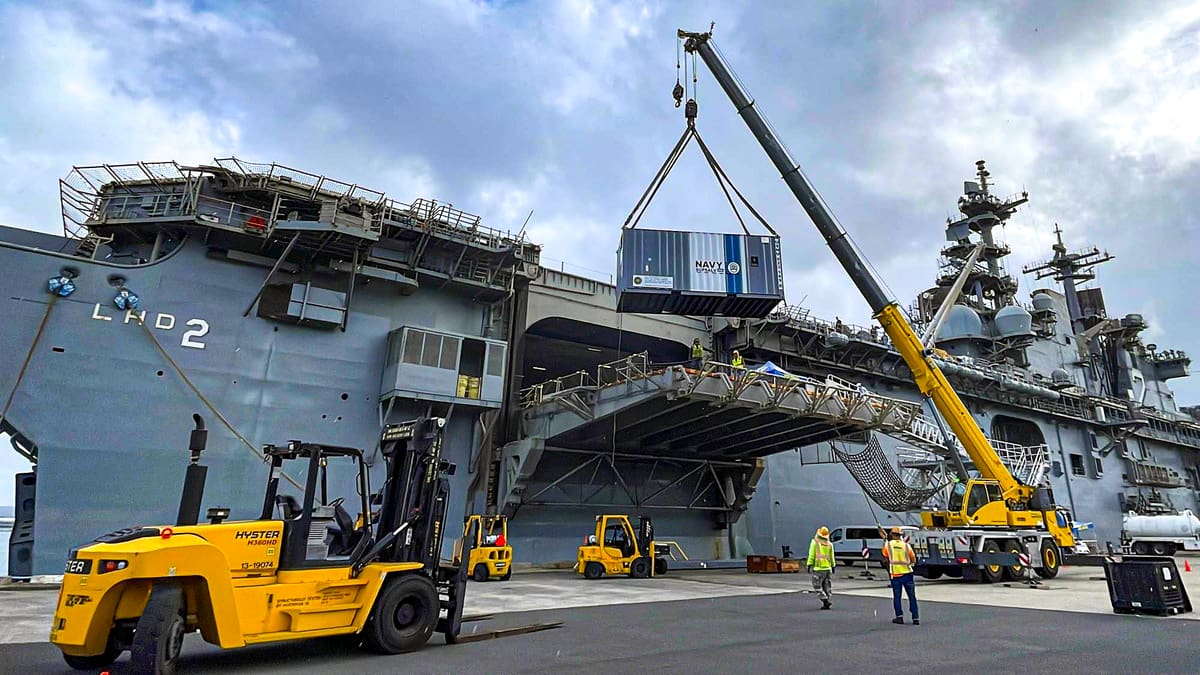
Just as sectors like aerospace, defense, energy, and aviation have come to know, there’s a revolution to be had with the advantages of 3D printing, and the maritime industry is taking note. Although cliche, time is money when businesses face the vast distances of the oceans, the busy schedule of the global supply chain, and the fact that spare parts alone cost the maritime industry billions of dollars each year. At such a scale, there’s inevitably room for improvement.
3D printing is gaining that edge as its abilities drive down fabrication times and costs dramatically. Components can also be produced near the location where they’re needed so that a procurement process that might’ve taken months only takes a few days, and colossal inventories of spare parts are unnecessary.
One key area where it’s made a difference is in repair and maintenance issues. Historically, both reasons a vessel might have been required to return to port, 3D printing’s on-demand part replacements alleviate such an inconvenience.
For large ships that spend a long time at sea, such as military aircraft carriers, or older vessels that could suffer a limited supply and availability of necessary parts, it’s a hugely significant development. If docking is essential, the rewards of organizing 3D printing centers at ports, compared to using inland manufacturers, include reduced waiting times, fewer delays, and zero transportation costs. Moreover, the technology strengthens resilience in an industry where a fault or damage can have catastrophic consequences.
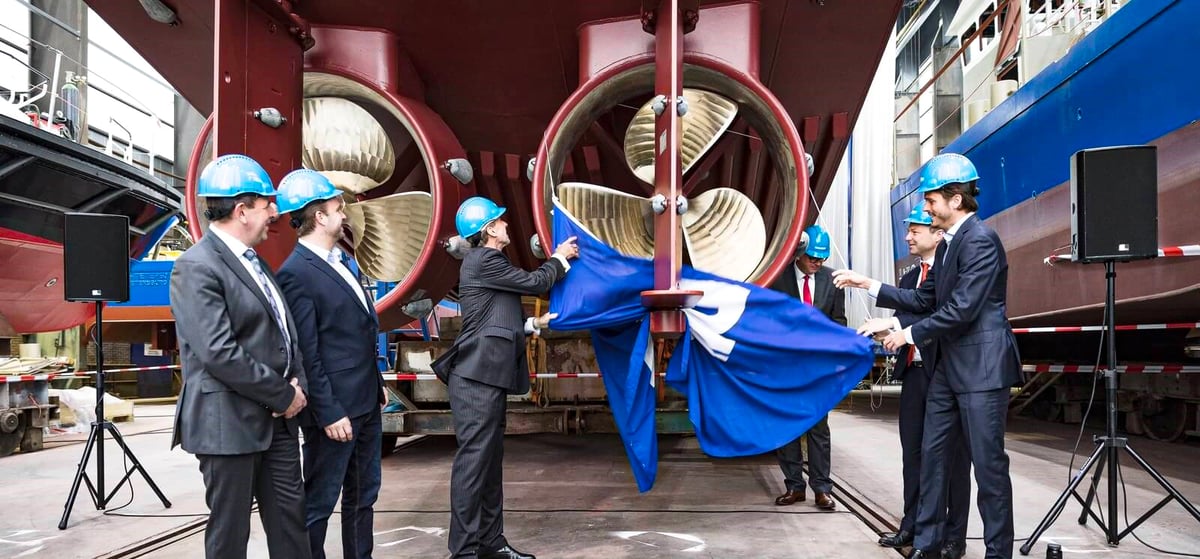
Citing such solutions earlier this month, as Thyssenkrupp and Wilhelmsen collaborated to launch the Pelagus 3D venture.
“In the maritime sector, AM can help unlock tremendous efficiency potentials with its fast and low-volume high-value fabrication capability of equipment component parts on-demand,” says Kenneth Lim, Assistant Chief Executive Singapore Maritime and Port Authority. “This agility ensures responsive support to meet the needs by ships and ports for urgent and critical spares.”
3D Printing In the Marine Industry Today
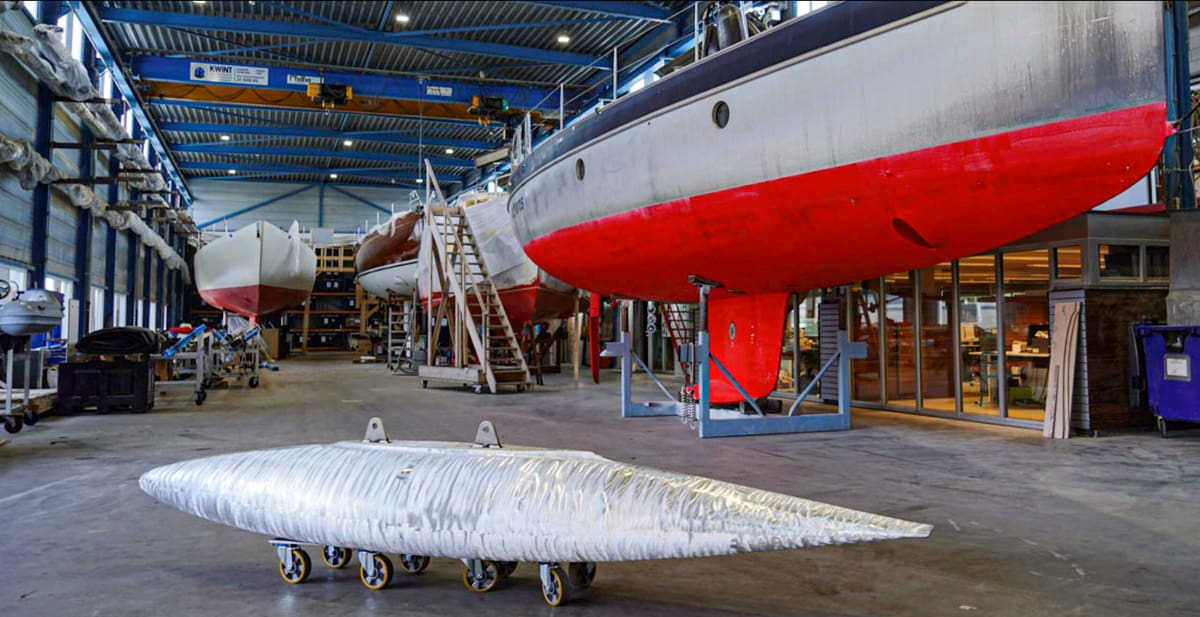
From 3D printing spare parts for vessels to 3D printing the vessels themselves, there’s almost no limit to the possible uses of 3D printing in the maritime industry.
3D Printing Onboard US Navy Vessels
The Navy isn’t new to appreciating how 3D printing can be a great asset to its fleet. Plastic parts produced with standard 3D printers have long been used to save time, lower costs, solve supply chain problems, and reduce inventory size. However, when the crew needed metal instruments, it returned to the waiting game.
“We’ve been using polymer plastic printers on ships and submarines for several years, but they are essentially desktop units that make relatively small plastic parts. The feedback we were getting from the fleet is that they need larger metal parts,” said Jim Pluta, additive manufacturing program manager at Naval Sea Systems Command (NAVSEA).
Recently, the US Navy has installed two 3D printers on the east and west coasts, including its first hybrid 3D printer, so that it can produce metal and plastic parts at sea, as and when required.
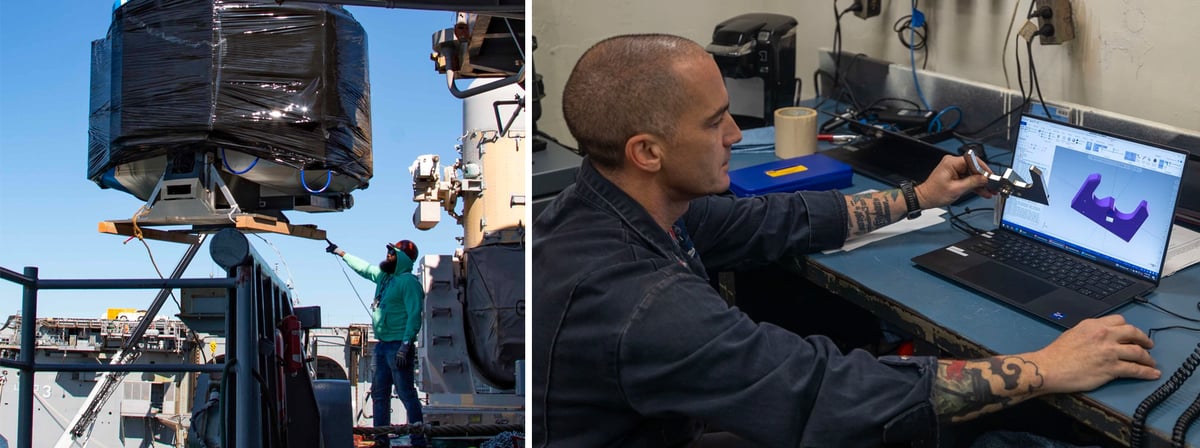
On the west coast of the US, the Xerox Elem Additive Solutions ElemX liquid metal 3D printer was delivered to the USS Essex in 2022, becoming the first 3D metal printer installed on a naval vessel before it was later transferred to the USS Boxer. On the east coast, a Phillips/Meltio Hybrid Additive Manufacturing system was installed aboard USS Bataan. Although both are metal printers, the ElemX makes aluminum components, and the Phillips system uses stainless steel.
Capt. Paul Burkhart, Bataan’s executive officer, commented, “Instead of having to order the whole, large assembly, and wait for it to get delivered wherever we are in the world, we just manufacture the sub-component or part that’s required, especially if it’s something we don’t normally carry.”
The US is sold on 3D printing that it’s exploring exporting it to its allies. In October, Deputy Assistant Secretary of Defense Lindsey Ford said support, such as unmanned surface and subsurface systems for situational awareness, and expeditionary logistics capabilities, such as 3D printing and modular at-sea resupply,” could be deployed to Southeast Asian states, including the Philippines, in the South China Sea.
3D Printing for Boats, Yachts & Ferries
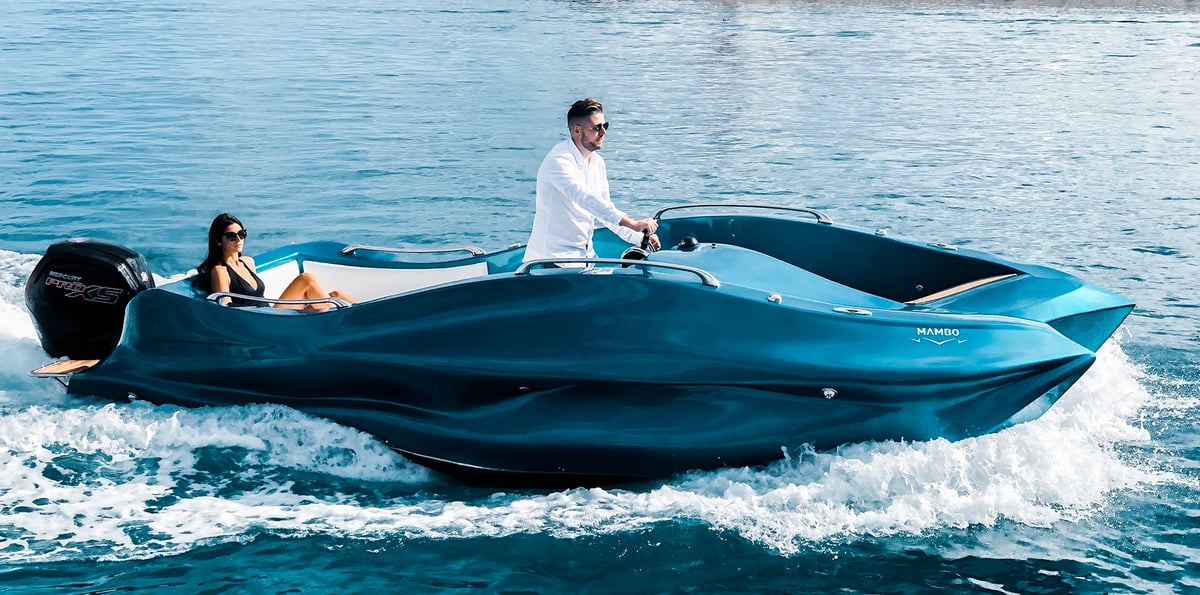
As 3D printers began to become available in larger and larger sizes, the idea of actually 3D printing an entire hull emerged.
The University of Maine 3D printed a boat in 2019 called 3Dirigio, which was 7.6 meters long. Then, an Italian company called Moi Composites launched the world’s first 3D printed fiberglass boat (6.5 meters) at the 2020 Genoa Boat Show. They used their own patented continuous fiber manufacturing process.
Now, in March of this year, designer Jozeph Forakis announced plans to print a massive 88-meter concept super-yacht called Pegasus, claiming it will be the world’s first 3D printed super-yacht. What’s unique about his concept is that it is not just its zero emissions operation but also its eco-friendly construction. They’re using less energy and producing less waste compared to traditional yacht building methods.
Dubai’s world-first 3D printed electric ferry, still on the drawing board, is at the forefront of cutting-edge marine transport concept aimed at modernizing the city’s traditional water cab. This vessel called an “abra” is suited for 20 passengers. As an example of the technology’s impact, the use of 3D printing in the abra’s production will cut costs by 30% and reduced manufacturing time by 90%, according to developers.
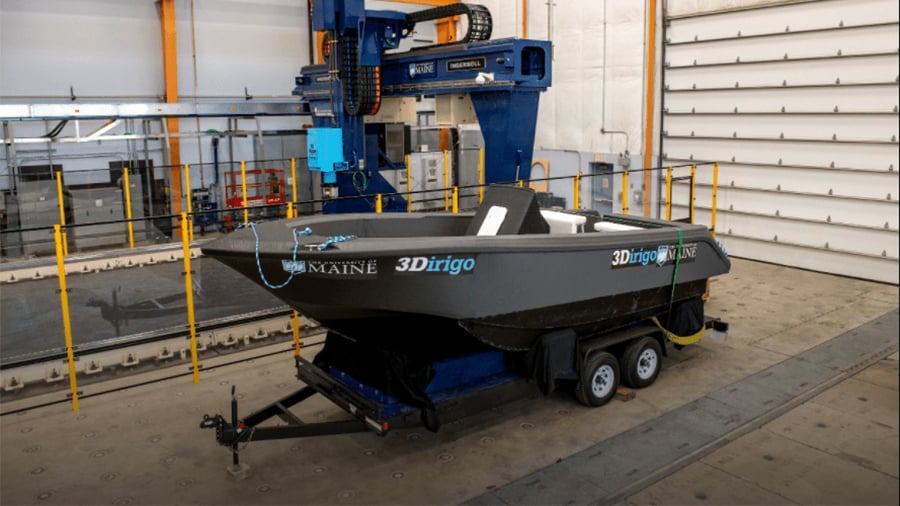
Last year, Al Seer Marine, an Abu Dhabi-based marine services company, launched its additive manufacturing business unit to leverage 3D printing technologies for the company’s in-house manufacturing of unmanned vessels and vehicles. The business unit will also develop large-scale products and parts that are in high-demand regionally and globally, it says. To that end, the company commissioned what is said to be the largest 3D printer in the world to 3D print boats and ship parts. At 36 meters long and four meters wide, the robotic arm 3D printer from CEAD is capable of 3D printing hulls, models for casting, and other parts.
Guy Neivens, CEO of Al Seer Marine, said: “The company’s decision to pursue additive manufacturing is testament to the technology’s growing influence and diverse applications across a range of sectors. This increased adoption has been largely driven by the digital process behind additive manufacturing, which allows for the creation of bespoke parts with complex geometries and little wastage – rapidly reducing costs and weight considerations while maintaining the part’s strength and integrity.
3D Printing for Marine Parts
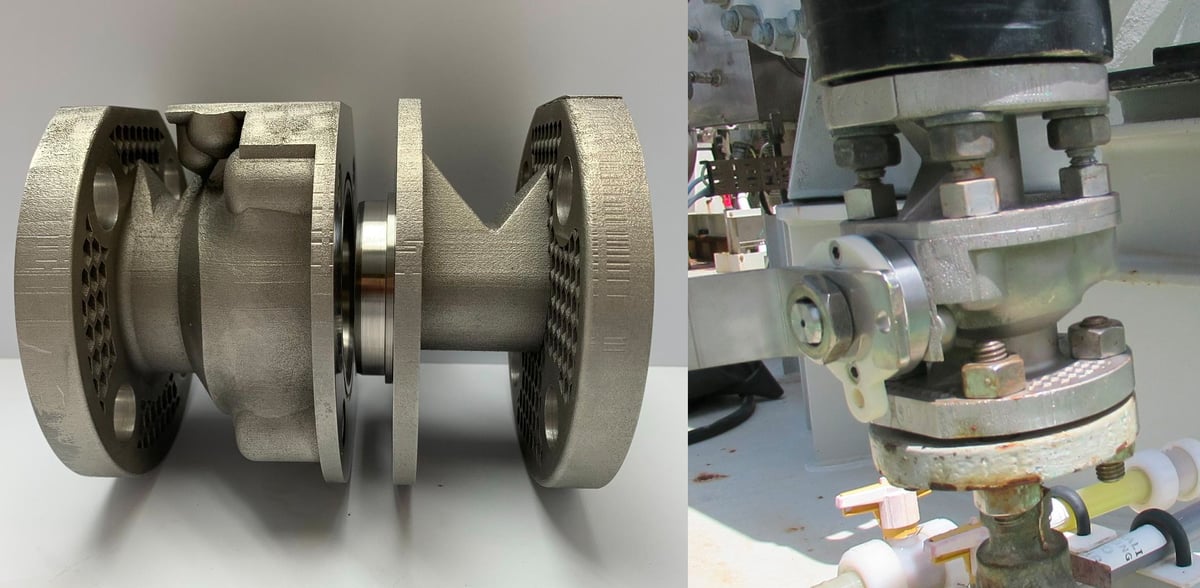
3D printing has been used over the past decade to print part for the marine industry ranging from anchors and propellers to valves and gears. It’s also used to make models for traditionally casting.
We’ll likely see a lot more 3D printing from the US Tri-Service Maritime forces, which includes the Navy, Marine Corps, since the Consortium for Additive Manufacturing Research and Education at the Naval Postgraduate School is expanding its facility with a new Spee3D XSpee3D metal printer using WAAM technology.
The Singapore University of Technology and Design and the National Additive Manufacturing Innovation Cluster (NAMIC) have joined forces with Mencast Marine on a project to manufacture and class a 3D printed propeller. The new initiative will use wire arc additive manufacturing (WAAM) techniques to achieve high-quality, low build-time, and support-free prints aligned with the ABS classification standards for propeller production.
“Additive Manufacturing represents the dawn of limitless possibilities in the maritime industry. It emerges as the game-changer, revolutionizing the way we approach complex and labor-intensive components. At Mencast, we see it as the bridge between traditional craftsmanship and future-forward innovation,” says Glenndle Sim, CEO of Mencast Group.
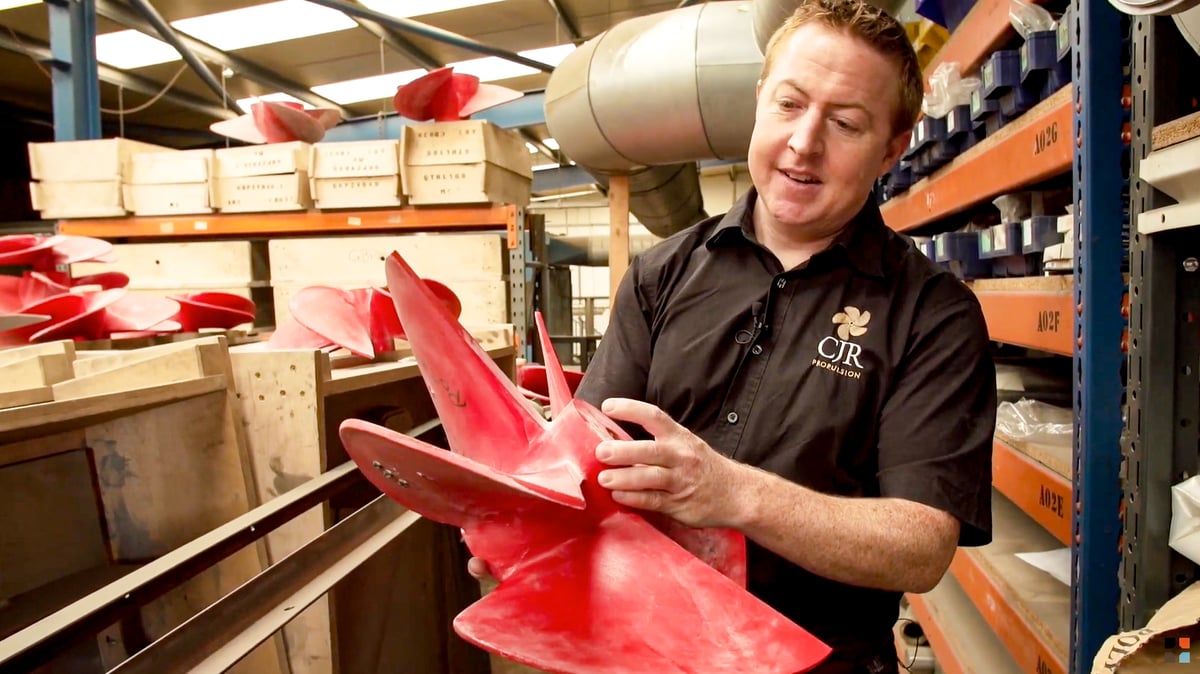
CJR Propulsion, a UK-based company that designs and manufactures custom propellers for luxury yachts and marine vessels, stays competitive in the market because it develops new propeller designs through multiple iterations that are printed out on its BigRep FDM 3D printer.
“This is something new that we wouldn’t have been doing without a 3D printer because it’s so cheap and easy to make the patterns that we can experiment with many different designs,” says Simon Lewis, technical director at CJR Propulsion. Patterns take hours to create rather than days and require sanding and coating before being used in the sand molder.
Because the patterns are printed with high-impact resistant materials, they have the mechanical properties to withstand high pressure and abrasion of the sand molder.
Spare Part Repositories
Thysennkrupp isn’t the only company working to digitize maritime spare parts. The US Marine Corps’ Advanced Manufacturing Operations Cell (AMOC) established a program in June to use software by 3YourMind to identify more parts with 3D printing potential. The Corps’ Digital Manufacturing Data Vault is already a repository of data and designs, but the new program will enhance warfighter efforts to approve spare parts and components for field use. The effort is part of a larger mission by the Department of Defense to reshore supply chains, create distributed manufacturing networks, and sustain legacy equipment using additive manufacturing technologies.
3D Printing Technologies Used in the Maritime Industry
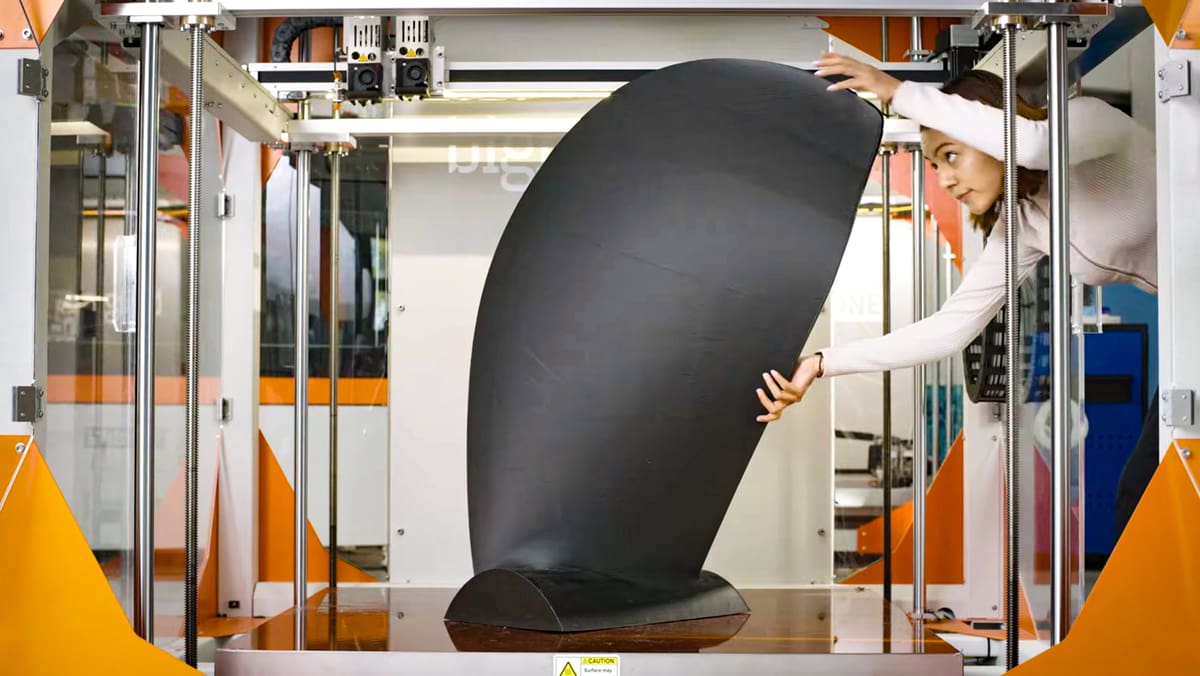
There are a number of 3D printing technologies applicable for use in the maritime industry. Wire arc additive manufacturing (WAAM) technology is a manufacturing process used to 3D print metal parts and sits under the directed energy deposition (DED) branch of the 3D printing network. WAAM works by progressively depositing metal one layer at a time on top of the previous layer to form a 3D shape. This technique is most often used to build large 3D metal objects and has been previously used in the maritime industry to make sea anchors, propellers, and other heavy parts.

Another technology used in the maritime industry is fused deposition modeling (FDM). This extrusion-based 3D printing process builds components using thermoplastic polymers from their filaments. FDM is one of the most common 3D printing technologies due to its accuracy, low cost, and comprehensive material selection. Its popular use in the maritime industry for prototypes and final parts in engineering-grade plastics, such as carbon fiber infused nylon.
Metal powder bed fusion (MPBF) also called metal sintering is a 3D printing process with massive potential for the maritime industry due to its ability to create complicated geometrical structures. Using a high power-density laser, the component is built in a basin filled with metal powder, shaping a solid design one layer at a time. In the past, the process has produced a hollow thruster blade with an internal titanium honeycomb structure.
For 3D printing on vessels, operators tend to favor 3D printing technologies that do not involve the inert gas environments common with some types of powder bed fusion. Cold spray is a metal 3D printing technology that uses supersonic speed to blast metal particles together.
What Hurdles Limit 3D Printing in the Maritime Industry?
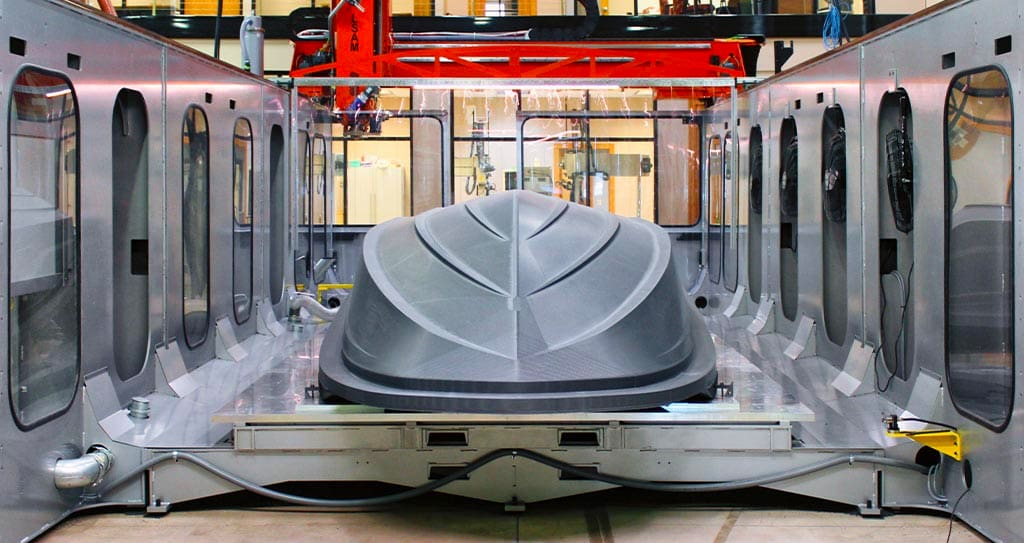
It shouldn’t be surprising that an industry that’s operated successfully for hundreds of years is slow to change. The maritime sector, encompassing all applications of sea navigation, marine vessels, and energy installations on or in the ocean, is known for a tentative and cautious approach to embracing new technology. 3D printing is no different. However, in recent times, as technology’s continuing march of progress has meant 3D printers could accomplish more and more of what’s required for the industry, innovation is displacing the traditional.
Nevertheless, challenges remain. Quality control of printed components is one issue. Within the harsh environment in which the maritime industry operates, suitable materials must be used, as scientific researchers consistently seek to improve strength, fire retardancy, resistance to corrosion, and environmental sustainability.
Regulation can help, with DNV, one of the world’s largest classification and certification societies, leading the way with the world’s first additive manufacturing certification for the maritime industry released in 2021. “It is an opportunity that should be embraced rather than a challenge the industry should try and resist. We are ready to certify and ready to support,” DNV GL Principal Material Specialist Ramesh Babu Goindaraj said at the time.
Scale is an issue. How can 3D printing accommodate the construction of large vessels? As this wave of technology advances, it’s one to watch; the development of large-scale printers will give companies fewer limitations. Other challenges, such as how to protect the intellectual property of design and patents, and how to train personnel, also need to be considered before 3D printing is accepted as standard practice across the industry.
License: The text of "3D Printing Drives Innovation in the Maritime Industry" by All3DP Pro is licensed under a Creative Commons Attribution 4.0 International License.
